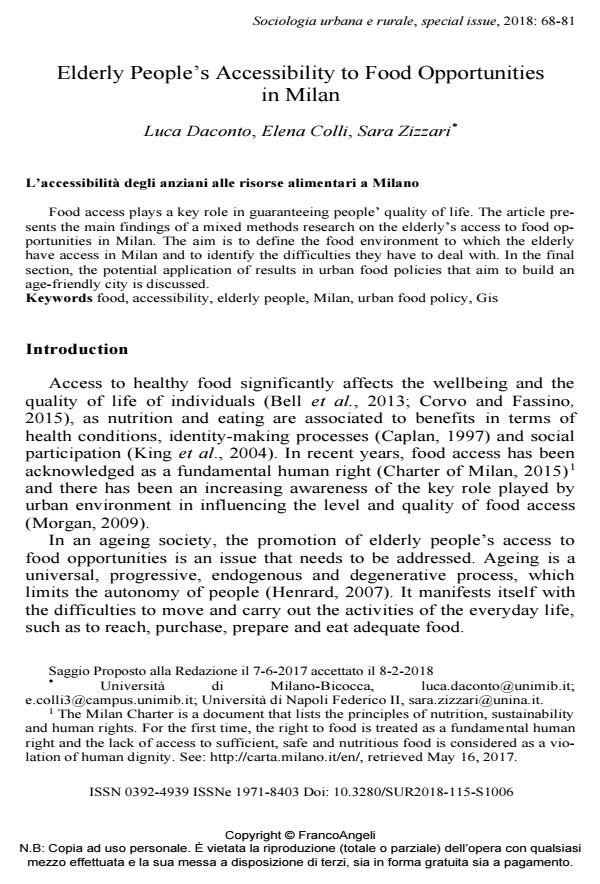Elderly People’s Accessibility to Food Opportunities in Milan
Journal title SOCIOLOGIA URBANA E RURALE
Author/s Luca Daconto, Elena Colli, Sara Zizzari
Publishing Year 2018 Issue 2018/115suppl.
Language English Pages 14 P. 68-81 File size 1194 KB
DOI 10.3280/SUR2018-115-S1006
DOI is like a bar code for intellectual property: to have more infomation
click here
Below, you can see the article first page
If you want to buy this article in PDF format, you can do it, following the instructions to buy download credits

FrancoAngeli is member of Publishers International Linking Association, Inc (PILA), a not-for-profit association which run the CrossRef service enabling links to and from online scholarly content.
Food access plays a key role in guaranteeing people’ quality of life. The article presents the main findings of a mixed methods research on the elderly’s access to food opportunities in Milan. The aim is to define the food environment to which the elderly have access in Milan and to identify the difficulties they have to deal with. In the final section, the potential application of results in urban food policies that aim to build an age-friendly city is discussed.
Keywords: Food, accessibility, elderly people, Milan, urban food policy, Gis
Luca Daconto, Elena Colli, Sara Zizzari, Elderly People’s Accessibility to Food Opportunities in Milan in "SOCIOLOGIA URBANA E RURALE" 115suppl./2018, pp 68-81, DOI: 10.3280/SUR2018-115-S1006